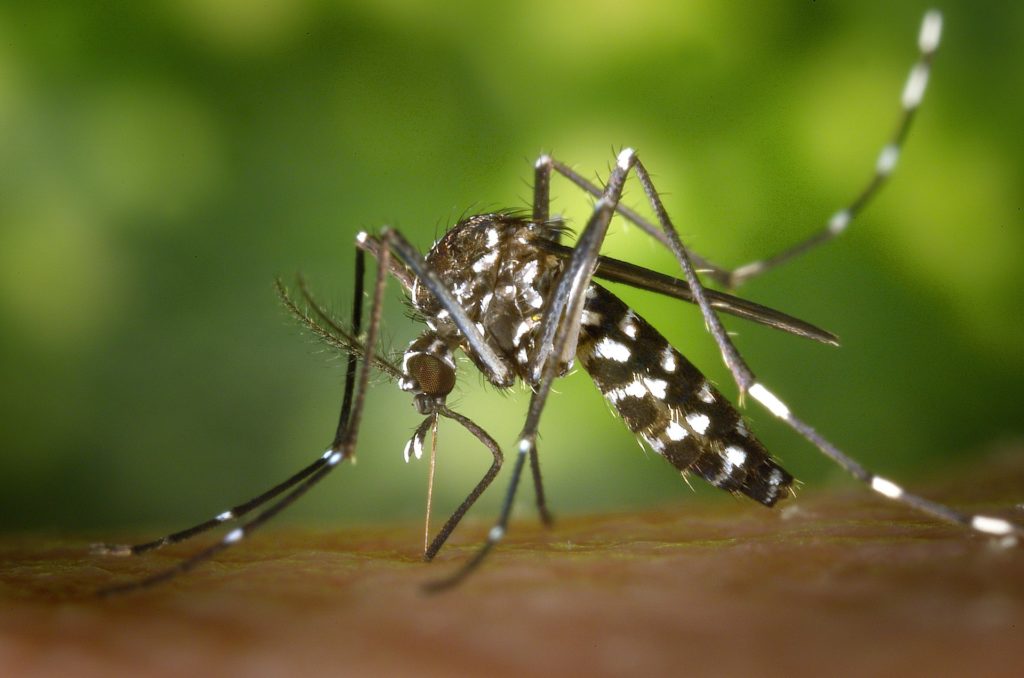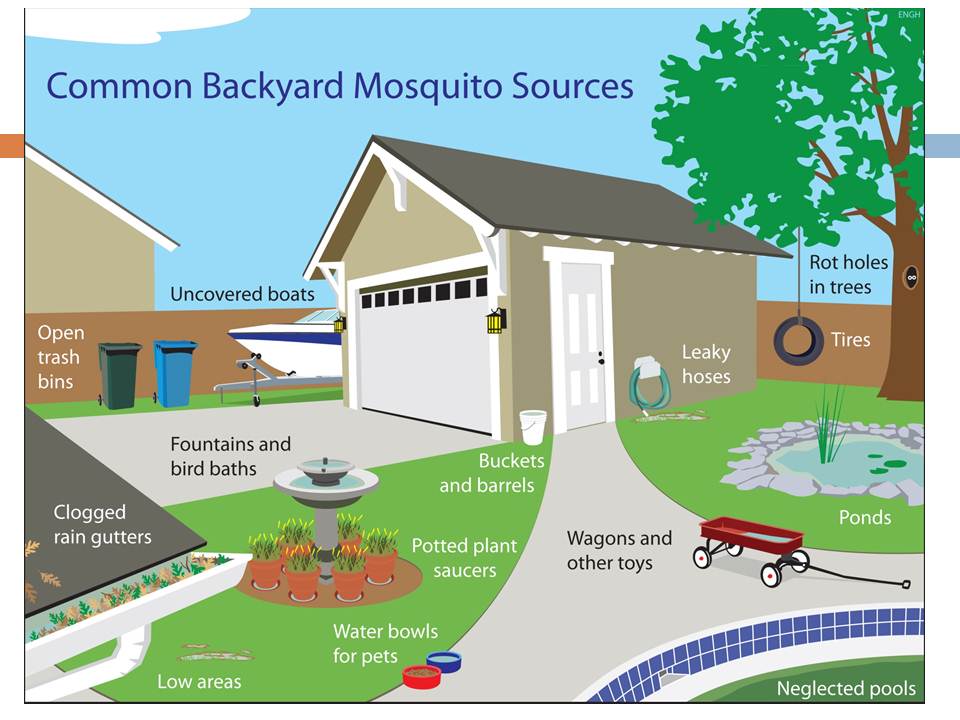Mosquito populations booming after rains
Three varieties to worry about, control and repel
That familiar buzz and bite are signs that mosquito season in Texas is here, according to a Texas A&M AgriLife entomologist.

Sonja Swiger, Ph.D., Texas A&M AgriLife Extension Service entomologist and associate professor in the College of Agriculture and Life Sciences Department of Entomology, Stephenville, said biting mosquitoes are a seasons-long problem that often changes based on the environment.
Which species are present and whether mosquitoes are an annoyance or vectors for diseases likely depends on those conditions, she said. Similarly, the temperature, availability of water and type of water available, such as clear floodwater in ditches, a wheelbarrow that has collected water or stagnant puddles in hot, dry weather are all contributing factors to what type of mosquito is visiting you and your family.
The annual mosquito boom
Rainfall, especially with multiple storm systems that have saturated and flooded areas around the state, can significantly contribute to a boom in mosquito populations, Swiger said.
“People are seeing, and should expect to see, quite a bit more mosquito activity in the next days and weeks,” she said. “Our focus is going to be disease carriers that typically become a problem in late summer and early fall. However, all this rain has created plenty of habitat for floodwater and container species.”
Swiger divides mosquitoes into those three categories – floodwater, container and stagnant – and they typically emerge in the order related to the breeding environment they prefer.
“Mosquitoes come in waves and can overlap as the season progresses,” she said. “It can help to understand what type you are dealing with, how to do your part to control them around your home and how to protect yourself and your family because we are in mosquito season.”
First wave: floodwater mosquitoes
Floodwater mosquitoes are the first to emerge after rain events, Swiger said.
Heavy rains leave the ground saturated and create standing puddles in ditches and low spots in fields and lawns. Floodwater mosquito larvae emerge quickly after water becomes available. Eggs are placed there by females and wait for water, sometimes two to five years before rainfall reaches them depending on the species, Swiger said.
Floodwater mosquitoes are typically larger and are aggressive. These types of mosquitos are often the persistent biters from dawn to dusk, Swiger said.
“The potential for standing water could make their habitat more widespread, which will make them a greater issue for more people than normal,” she said. “Any location that is holding water, even in grassy areas, could be a breeding ground.”
Swiger said females lay more eggs in the moist soil around puddles, and either more larvae emerge, or they will go dormant and wait for water to return. Subsequent rains can wash larvae downstream but can also trigger dormant mosquito eggs.
Second wave: container mosquitoes
Container mosquitoes, which include the Aedes species identified by its black and white body and white striped legs, typically emerge next. Female mosquitoes lay eggs in anything holding water – from tires, buckets and wheelbarrows to gutters, unkept pools and trash cans. They prefer clearer, fresher water, and females are constantly looking for good breeding sites.
Container mosquitoes like Aedes are daytime feeders but can be opportunistic at nighttime when large groups of people gather, Swiger said.
“Anytime after a rain, it is good to make a round on the property to look for anything that might be holding water,” she said. “It just takes a matter of days for these mosquitoes to go from egg to biter, so they can become a problem pretty quickly.”
Third wave: Culex mosquitoes
Culex, a mosquito species that prefers stagnant pools of water with high bacteria content, typically emerge as waters recede and dry summer conditions set in and create breeding sites in low-lying areas. They are the disease carriers that concern the public and health officials, Swiger said.
It is not easy to forecast their emergence because their ideal environment can be washed away by additional rains or dried up by extreme heat and drought, Swiger said. In rural areas, bogs, pooled creek beds or standing water in large containers such as barrels, trash cans or wheelbarrows can make a good habitat for Culex. In the city, similar pools in dried up creeks or other low spots can create breeding sites, but most urban issues occur underground in storm drains where water can sit and stagnate.
“It’s difficult to predict when or where these mosquitoes might become a problem,” she said. “Widespread heavy rain makes it even more difficult to predict.”
How to repel mosquitoes from yourself, children and pets
Swiger said reducing mosquito numbers in your location and the use of spray repellents are a good start when it comes to protecting yourself from bites. Covering exposed skin with long-sleeved shirts and long pants help as well.
Making recommendations for protecting people or locations from mosquitoes can be a tricky proposition, Swiger said. She does not recommend any repellents or mosquito repelling products that are not approved by the Centers for Disease Control and Prevention.
Anecdotal evidence exists that alternatives like essential oils repel mosquitoes, Swiger said. Spatial repellent devices like Thermacell are popular, however some people may balk at the chemical particles the units emit to create a barrier around a person or space.
Plants like citronella, geraniums, lemongrass, lavender, lantana, rosemary and petunias have been shown to repel mosquitoes, but Swiger said the distribution limits effectiveness for protecting a space. The number of plants and the location among other factors would weigh heavily into their effectiveness.
Candles and other smoke-based repellents fall into a similar category as plants, Swiger said.
“Protecting yourself with any spray-on, CDC-approved repellent like DEET, picaridin or lemon eucalyptus oil is my best recommendation anytime you go outside for an extended period,” she said. “Personal protectants are the only certainty against bites.”
Swiger said pets should be removed from areas with mosquito infestations. Small children should not be taken outdoors for long periods if mosquitoes are an issue because they can have adverse reactions to mosquito bites, and spray products should be used sparingly on them, especially babies. There are age restrictions for most repellents; no repellents on babies less than 2 months old and do not use lemon of eucalyptus oil on children 3 and under.
“This time of year, it’s just best to limit their exposure to mosquitoes,” she said.
How to control, prevent mosquitoes
Controlling mosquitos after widespread, heavy rains is difficult because their habitat can be so unpredictable, Swiger said. Container mosquitoes are a bit easier – remove the habitat by dumping the water or treat the water with granular or dunk larvicides.

“Empty containers filled with water as much as possible and look for standing water that can be drained or where dunks larvicides can be effective,” she said. “It’s just a matter of, how far do you take it before other options are necessary?”
Sprays or barrier treatments that kill adult mosquitoes are another option, but effectiveness is limited, Swiger said. Products that homeowners can apply only last 24 hours. Professionals can apply longer-lasting barrier products – typically pyrethroid-based or organic products – but their effectiveness degrades with time.
Some groups and municipalities initiate mosquito abatement programs, especially when major outbreaks occur or mosquitoes become a health risk, but they are temporary as well, Swiger said. They typically spray at night to kill adult mosquitoes, and the residue burns off in the sunlight after dawn.
“Some cities and counties do a pretty good job staying on top of mosquito control, but it can be an overwhelming task, and weather can hinder effectiveness,” she said. “The best thing to remember is to protect yourself when outdoors for extended periods, reduce breeding sites as much as possible in your space and then be mindful of areas nearby that might become problematic.”


